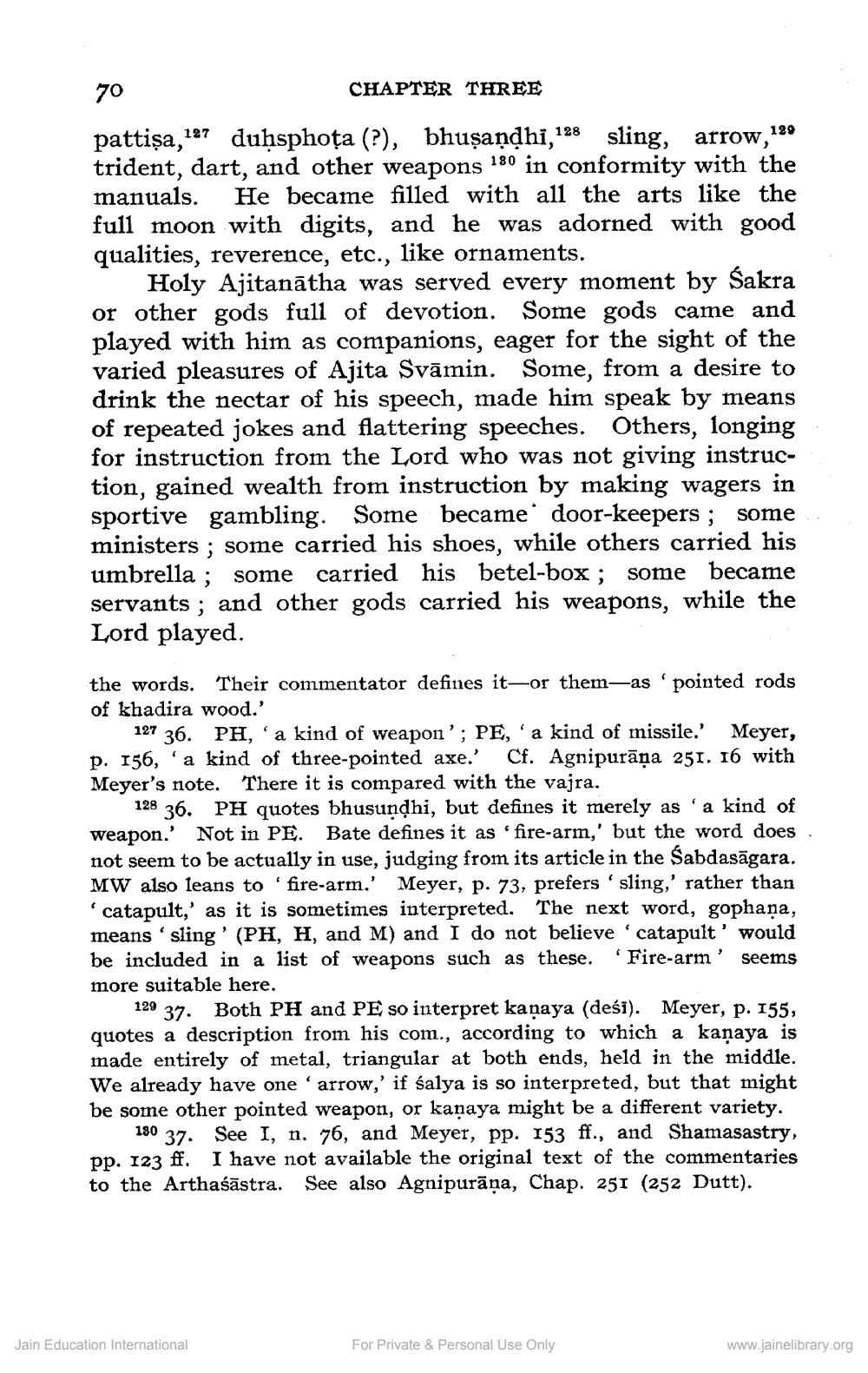________________
70
CHAPTER THREE
pattisa,127 duḥsphoța (?), bhusaņdhi,128 sling, arrow, 129 trident, dart, and other weapons 180 in conformity with the manuals. He became filled with all the arts like the full moon with digits, and he was adorned with good qualities, reverence, etc., like ornaments.
Holy Ajitanātha was served every moment by Sakra or other gods full of devotion. Some gods came and played with him as companions, eager for the sight of the varied pleasures of Ajita Svāmin. Some, from a desire to drink the nectar of his speech, made him speak by means of repeated jokes and flattering speeches. Others, longing for instruction from the Lord who was not giving instruction, gained wealth from instruction by making wagers in sportive gambling. Some became door-keepers ; some ministers; some carried his shoes, while others carried his umbrella ; some carried his betel-box; some became servants; and other gods carried his weapons, while the Lord played.
the words. Their commentator defines it-or them—as 'pointed rods of khadira wood.'
127 36. PH, a kind of weapon’; PE, a kind of missile. Meyer, p. 156, a kind of three-pointed axe.' Cf. Agnipurāņa 251. 16 with Meyer's note. There it is compared with the vajra.
128 36. PH quotes bhusundhi, but defines it merely as a kind of weapon.' Not in PE. Bate defines it as 'fire-arm,' but the word does not seem to be actually in use, judging from its article in the Sabdasāgara. MW also leans to 'fire-arm. Meyer, p. 73, prefers 'sling,' rather than 'catapult,' as it is sometimes interpreted. The next word, gophana, means ' sling' (PH, H, and M) and I do not believe 'catapult' would be included in a list of weapons such as these. Fire-arm' seems more suitable here.
129 37. Both PH and PE so interpret kaņaya (deši). Meyer, p. 155, quotes a description from his com., according to which a kanaya is made entirely of metal, triangular at both ends, held in the middle. We already have one 'arrow,' if salya is so interpreted, but that might be some other pointed weapon, or kanaya might be a different variety.
180 37. See I, n. 76, and Meyer, pp. 153 ff., and Shamasastry, pp. 123 ff. I have not available the original text of the commentaries to the Arthaśāstra. See also Agnipurāna, Chap. 251 (252 Dutt).
Jain Education International
For Private & Personal Use Only
www.jainelibrary.org




